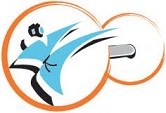|
Di Tang Quan is an incredibly
dynamic martial-art form.It is characterized by an acrobatic nature that
includes flips, somersaults, and twists. Many elements of the art have been
amalgamated into other Chinese martial arts and exercises.
What seperates this art from
standard acrobatic routine is that every somersault, twist, jump or flip
contains a surprise punch, kick, grab or throw.
One unusal exercise
characteristic of this art is that the practitioner will repeatedly jump
backwards up into the air as high as they can and land on his back. This
might seem strange, this is an exercise of central importance to the
understanding of Chinese martial arts and students are encouraged to
practise the exercise rigorously.
When a martial artist's body
receives an impact, he must exhale violently to contract the muscle and
constrict the rib cage, emptying the lungs of air as quickly as possible in
order to protect the vital organs from damage and prevent or diminish the
effects of being winded.
Despite the fact that many may
consider this method of training unnecessarliy dangerous to one's health, it
is said that, if practised properly, repetition of the exercise will teach
the body to exhale instinctively, relax, and allow the impact to travel
through the body without harming or disrupting the practitioner's ability to
function. |













